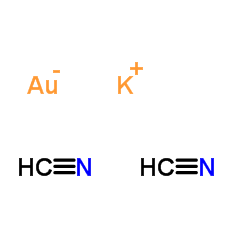| 结构式 | 名称/CAS号 | 全部文献 |
|---|---|---|
 |
氰化金钾
CAS:13967-50-5 |
|
 |
氰化亚金
CAS:506-65-0 |
|
 |
氰金(I)酸钠
CAS:15280-09-8 |